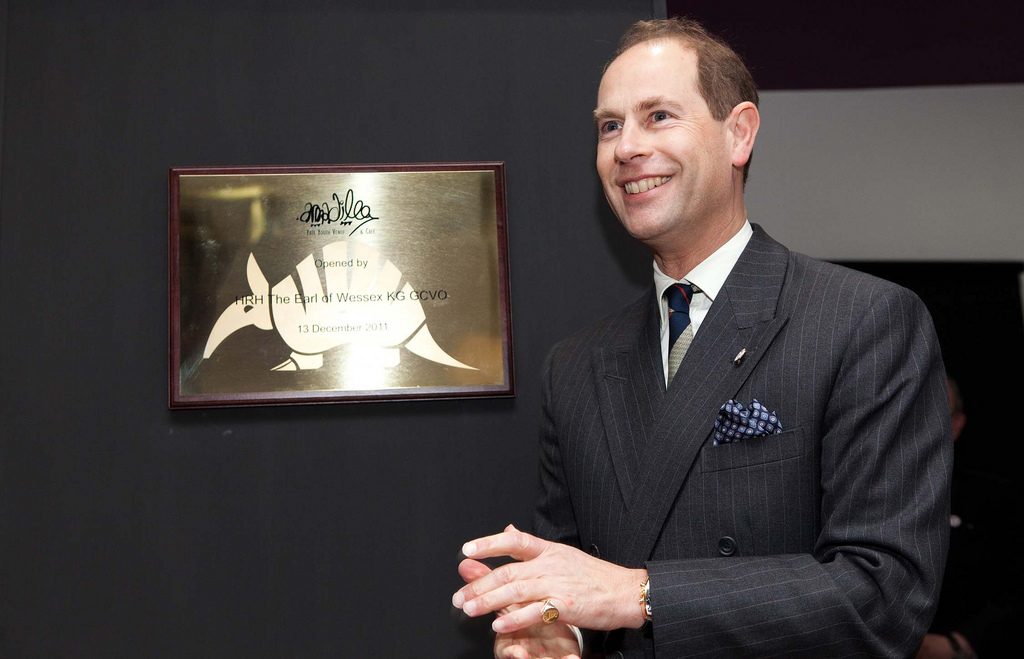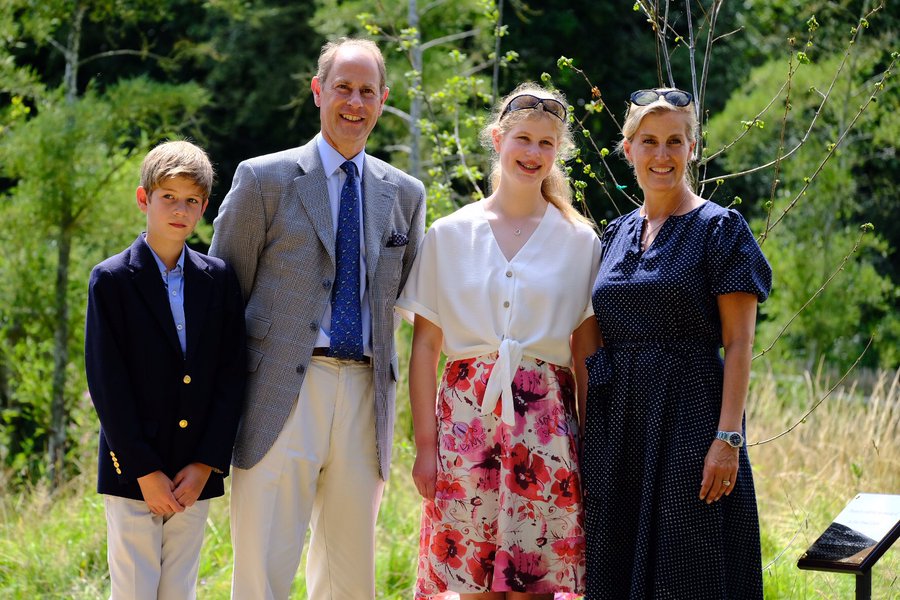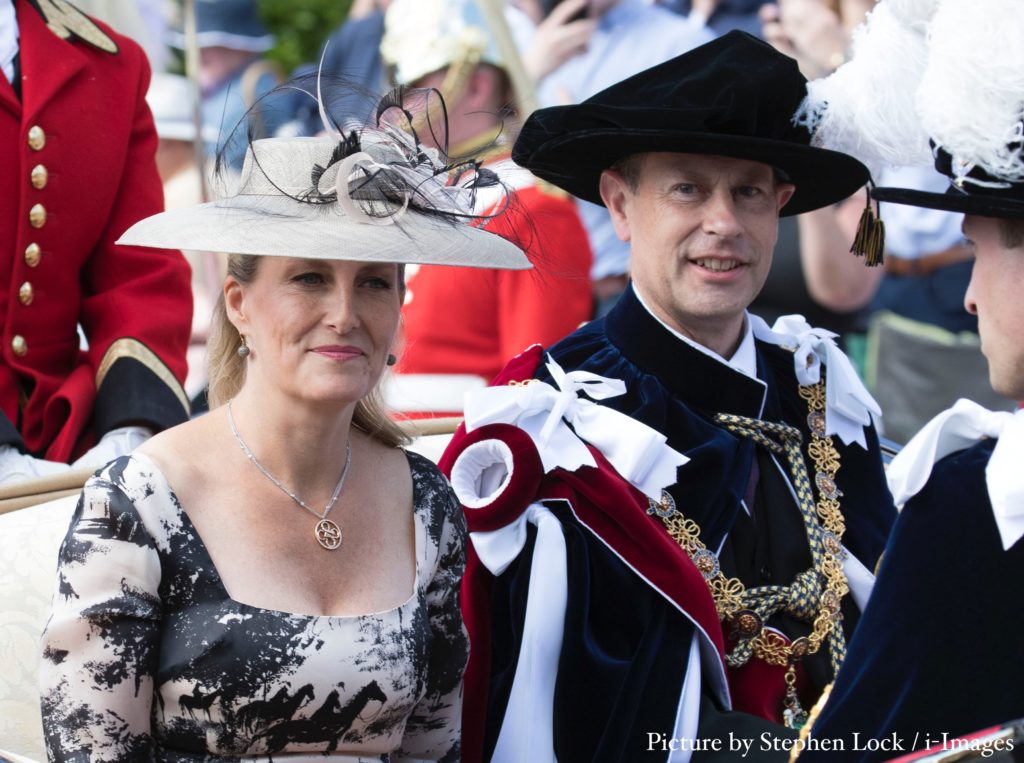
Birth and Childhood
Prince Edward Antony Richard Louis is the third son and youngest child of Queen Elizabeth II and Prince Philip, Duke of Edinburgh. He was born on 10 March 1964 at Buckingham Palace and was christened two months later at Windsor Castle.
Embed from Getty ImagesHis early education was formalised under a governess, and he attended Gibbs School before he started at Heatherdown School in Berkshire in 1972. Following family tradition, he attended Gordonstoun School and became Head Boy in his last term. He left school with below level A-grades and spent a gap year in New Zealand at the Wanganui Collegiate School.
Prince Edward attended Jesus College, Cambridge to read history, and he graduated in 1986 with a BA and achieved a Masters of Arts (Cantab) in 1991.
Early Working Life
Prince Edward joined the Royal Marines upon his graduation, but he dropped out in 1987, only completing a third of the training programme.

The Prince gravitated towards television production and theatre and spent time working for Andrew Lloyd Webber’s Really Useful Theatre Company. He worked on two films about the Duke of Edinburgh’s Award that were broadcast by the BBC; later, he formed Ardent Productions, which made films with a royal slant, such as Edward on Edward and Crown and Country.
Perhaps most infamously, Prince Edward conceived the idea for the now-notorious “The Grand Knockout Tournament” or “It’s a Royal Knockout!” a charity television show that featured himself, the Princess Royal, and the Duke and Duchess of York (Prince Charles reportedly forbade his wife Diana from participating). It was poorly received by the media and was allegedly made against the wishes of The Queen and her courtiers.
Prince Edward again found himself in hot water when Ardent Productions was discovered to be filming Prince William at the University of St Andrews despite an agreement between the Palace and the media that meant Prince William would be able to study without media intrusion.
In 2009, Prince Edward dissolved Ardent Productions. The company had only £40 in assets when it was dissolved.
The Earl of Wessex
Prince Edward met his future wife, Sophie Rhys-Jones, in 1993 at a charity tennis match. The pair dated for several years and their engagement was announced on 6 January 1999. They married later that summer, on 19 June, in St George’s Chapel at Windsor Castle.
Embed from Getty ImagesThe couple broke with royal tradition, as their wedding did not follow the standard of taking place at either Westminster Abbey or St James’s Palace like those of his parents or siblings. Their wedding was not a state occasion, meaning that the Prime Minister was not invited, and guests were asked not to wear hats to create a more informal atmosphere – The Queen Mother, however, wore a hat.
Upon his marriage, The Queen created her youngest son the Earl of Wessex, with the secondary title of Viscount Severn. It was announced that the couple would be elevated to the Dukedom of Edinburgh upon the passing of the Earl’s father and upon the title reverting to the Crown (when his oldest brother, the Prince of Wales assumes the throne).
It was reported in the British press that Prince Edward was drawn to the title ‘Earl of Wessex’ from the recently released film Shakespeare in Love, which featured a character played by Colin Firth with the title.
The Earl and Countess of Wessex have two children, Lady Louise Windsor, who was born on 8 November 2003 after a harrowing labour and delivery due to her premature birth; and James, Viscount Severn, who was born on 17 December 2007. They are the youngest grandchildren of Queen Elizabeth II and Prince Philip.

A Royal Career
The Earl and Countess of Wessex continued with their work for a couple of years after their wedding; however in 2002, after controversies on both sides, they announced that they would step up their public duties and support of The Queen during her Golden Jubilee Year.
The Earl and Countess of Wessex routinely represent The Queen at royal weddings throughout Europe, and maintain active roles within The Duke of Edinburgh’s Award Foundation, as they will eventually take it over when they inherit the dukedom.

They participate in family events and state occasions and tour the world on behalf of The Queen, visiting countries including the Caribbean, Antigua, Barbuda, Barbados, Gibraltar, Grenada, Montserrat, St. Kitts and Nevis, St. Lucia, St. Vincent, the Grenadines, Trinidad and Tobago, Canada, and Finland.
The Earl of Wessex is the patron of many organisations, most notably with the Duke of Edinburgh’s Award and its international iteration.

